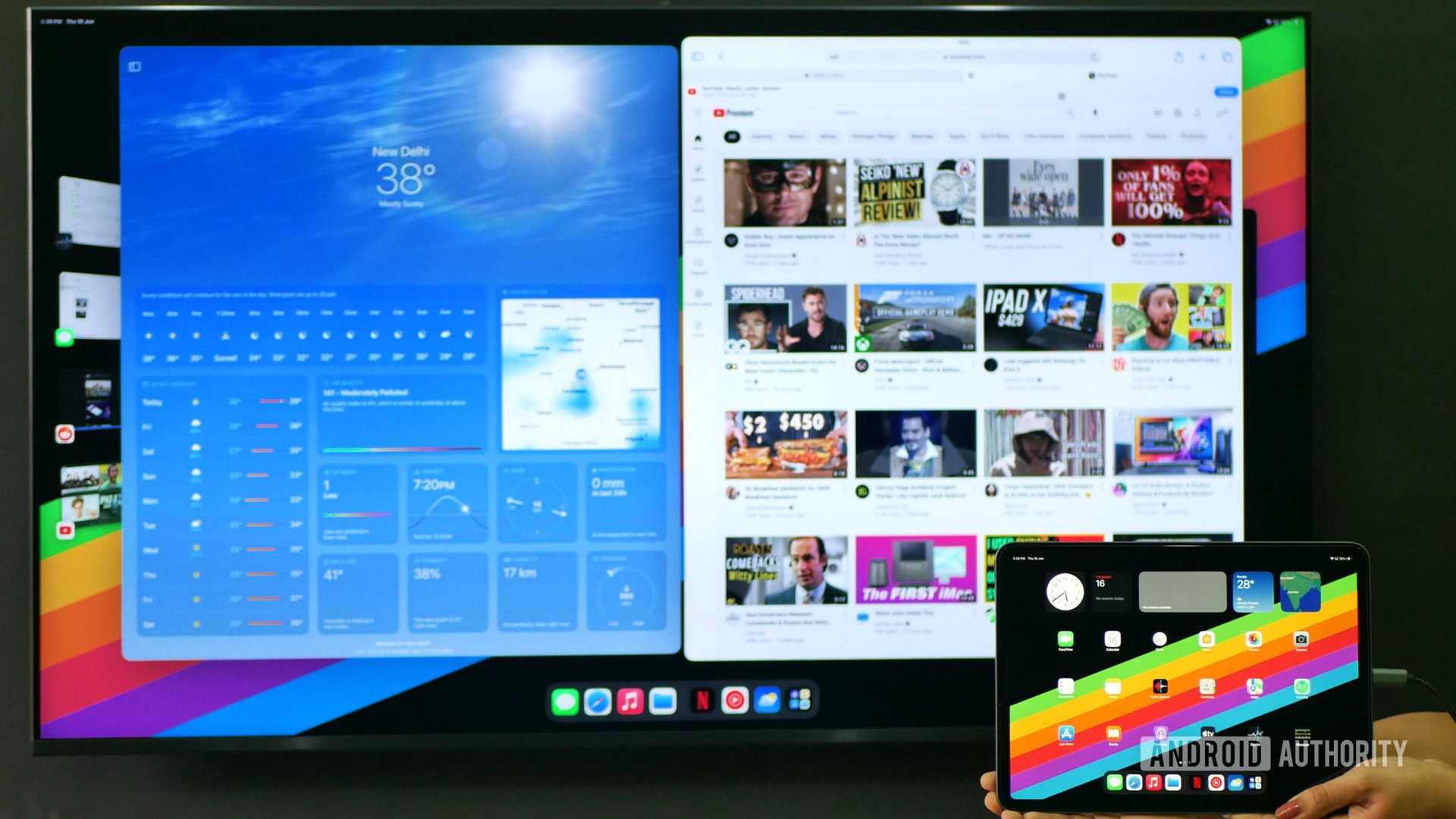Affiliate links on Android Authority may earn us a commission. Learn more.
How to connect your iPad to an external monitor
Apple likes to promote the idea that an iPad can replace a laptop or desktop computer — we all remember the infamous “What’s a computer?” TV ad. One of the ways this is supported is connecting to an external monitor, although you may need additional accessories to make it happen. We’ll explain everything you need to know below.
JUMP TO KEY SECTIONS
How to connect an iPad to a monitor using a connector
A wired connection is ideal for a variety of reasons, but your options will vary depending on whether your iPad is equipped with USB-C and/or Thunderbolt (all current-gen iPads) or a Lightning port (as on many older models).
USB-C or Thunderbolt

If a monitor has a USB-C or Thunderbolt input built in, you should be able to connect directly with a compatible cable, as long the port on your iPad matches. At the moment, only iPad Pros support Thunderbolt.
If your monitor has a DisplayPort connector, but no USB-C or Thunderbolt, you may be able to use a third-party adapter cable. Make sure that everything supports DisplayPort’s Alt Mode.
In the case your monitor lacks both DisplayPort and USB-C/Thunderbolt options, follow these steps:
- Connect Apple’s USB-C Display AV Adapter or USB-C VGA Multi-port Adapter to your iPad, depending on whether your monitor supports HDMI (the most likely scenario) or only VGA.
- Plug an HDMI or VGA cable into the adapter, as appropriate.
- Plug the other end of the cable into your monitor, and switch the display to the correct video source.
Apple notes that if a monitor doesn’t turn on automatically, you may have to unplug the cable and/or the monitor’s power source and try again.
Lightning
No monitor has native Lightning support, so you’ll need to use this checklist:
- Connect Apple’s Lightning Digital AV Adapter or Lightning to VGA Adapter to your iPad, depending on whether your monitor supports HDMI or only VGA.
- Plug an HDMI or VGA cable into the adapter.
- Plug the other end of the cable into your monitor, and switch the display to the correct video source.
- Connect a charging cable to your adapter if you don’t want your iPad to rely on battery power.
How to wirelessly connect an iPad to a monitor
Unless you’re willing to spend extra on a wireless HDMI or DisplayPort kit, the only real option is Screen Mirroring via AirPlay. Most monitors don’t support AirPlay, though, so you may need to buy an AirPlay video receiver, at which point you’re better off using one of the other options we’ve suggested so far.
Can you connect an iPad to a monitor with sound?
If the monitor has integrated or connected speakers, and you’re using USB-C, Thunderbolt, DisplayPort, or HDMI, this should be relatively straightforward. The iPad will automatically route audio to that location.
Where things get complicated is if you don’t want to use those speakers. Once you’re connected to your monitor, you’ll need to open Control Center on your iPad, tap the AirPlay icon, then choose another output (whether Bluetooth or AirPlay). Your iPad won’t remember this configuration, so you’ll have to do this every time you connect to the monitor. If you’re using AirPlay Screen Mirroring, you won’t be able to use AirPlay to push audio somewhere else.
FAQs
Yes. Many of the same principles in this guide apply, though if you just want to view photos or video, it’s better to use regular AirPlay or Google Cast instead of Screen Mirroring or connecting an HDMI cable. The only exception to this if an app or TV doesn’t support casting.
Yes, and we have separate guides for the Xbox and PlayStation instructions.
Yes, and instructions are mostly similar to an iPad. Note however that no iPhone supports Thunderbolt, and only the iPhone 15 Pro might be able to use DisplayPort’s Alt Mode. You’ll also be doing straight mirroring, since iPhones don’t support Stage Manager homescreen extension.